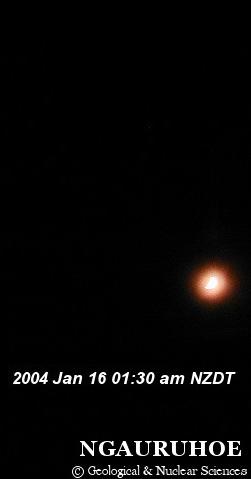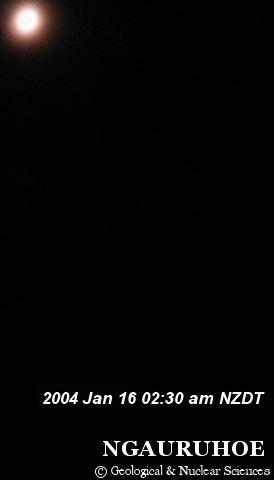

Almanac readings state the moon is in it’s half phase on Jan 16, but this pic from New Zealand captures a complete orb? So what is this? The other day I saw a really bright star, half an hour after sunset in the southern sky, more like south south-west. Did I see Venus, or is it Planet X?
Planet X emits its own glow, which is why it was detected by its heat by the IRAS team in 1983, could be seen by observatories in Early 2001 as a dim blur precisely at the ZetaTalk Coordinates, could be imaged by observatory Infrared equipment in early 2002 precisely at the ZetaTalk coordinates, could be captured as CCD images by amateur equipment in late 2002 and early 2003 as a white dot not in the star system maps and precisely at the ZetaTalk coordinates, and could be sighted at the outer edges of the solar system late March, 2003 as a faint dim red blur of a dot precisely at the ZetaTalk coordinates. The dust cloud of Planet X also reflects sunlight. Where all this has made the inbound complex visible, it is also throwing light toward the Sun, and in all directions. The Moon, in its phases, is supposedly reflecting only sunlight, and thus is remarkably predictable. But the Second Sun is now close enough, particularly when viewed from the Southern Hemisphere, to be casting competitive light upon the Moon, proof of the presence of light from Planet X, which is proof of Planet X for all but the brain dead. Venus is likewise seen as the morning or evening star, though a star it is not but only reflecting sunlight. In its snug orbit around the Sun, within the Earth’s orbit, it also has a face pointing toward the Planet X complex and visible from Earth. Thus, Venus too, is reflecting light from Planet X to those gazing at it. Regardless of how the extra-bright Venus is explained away by the cover-up artists, the full moon out of phase cannot be explained away.

